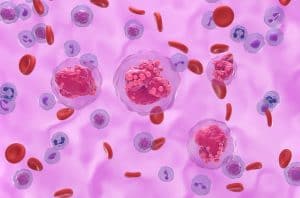NICE releases reflux disease guidelines
pharmafile | January 15, 2015 | News story | Sales and Marketing | NHS, NICE, UK, gor, gord, h2ra
NICE has released new guidelines providing doctors with advice on how to treat gastro-oesophageal reflux disease (GORD) in young people.
The new recommendations aim to provide medical professionals with the knowledge to make the correct diagnosis and advise families on the differences between GORD and GOR.
“It can be difficult to differentiate between ‘normal’ episodes of reflux [GOR] and more serious GORD, but this new NICE guideline will mean infants, children and young people get the care that they need while also avoiding over-treating healthy children,” says Professor Mark Baker, who is the director for the Centre for Clinical Practice at NICE.
Reflux tends to be characterised by visibly regurgitating food after eating and is most common in babies. GOR affects four in every 10 infants and usually becomes less frequent with time.
GORD on the other hand is most commonly caused by a ring of muscle towards the bottom of the oesophagus (the lower oesophageal sphincter) failing to work properly. This causes acid to leak out of the stomach when it should be closing after letting food into the gut.
Baker continues: “GOR and GORD in infants, children and young people, although common, can be very distressing. Parents and carers can feel helpless and may feel like their fears or concerns are being dismissed. Healthcare professionals should reassure families but also take all concerns seriously.
“If not treated, GORD can lead to malnutrition in children, cause ulcers in the oesophagus and can have psychological effects on a child’s relationship with food. GORD can be treated well with medication, so specialist referrals should be given to those children whose symptoms persist.”
Therapy for the conditions includes a horde of OTC drugs, plus proton-pump inhibitors (PPIs) and H2-reseptor antagonists (H2RA).
GlaxoSmithKline offer stomach acid fighting pills via its Tagamet (cimetidine) and Zantac (ranitidine), of which both were almost sold off last month along with another 48 treatments to competitors, in a deal potentially worth $3.5 billion.
Tom Robinson
Related Content

NICE recommends migraine treatment for NHS use
The National Institute for Health and Care Excellence (NICE) has shared draft guidance recommending AbbVie’s …

GSK’s Jemperli recommended by NICE for endometrial cancer treatment
GSK has announced that the National Institute for Health and Care Excellence (NICE) has recommended …

NICE recommends SC treatment of AbbVie’s Tepkinly for patients with DLBCL
AbbVie has announced that the National Institute for Health and Care Excellence (NICE) has recommended …








